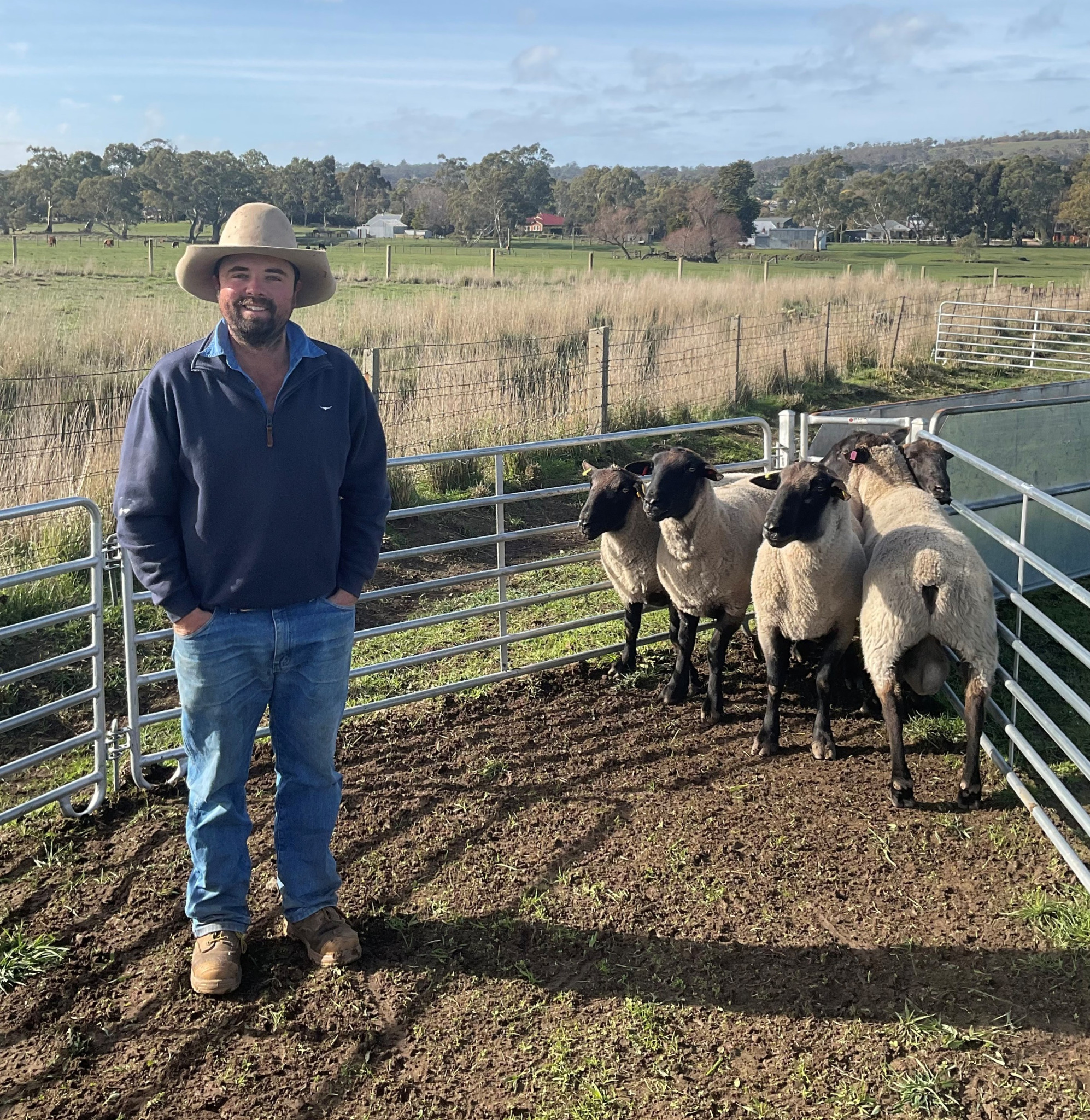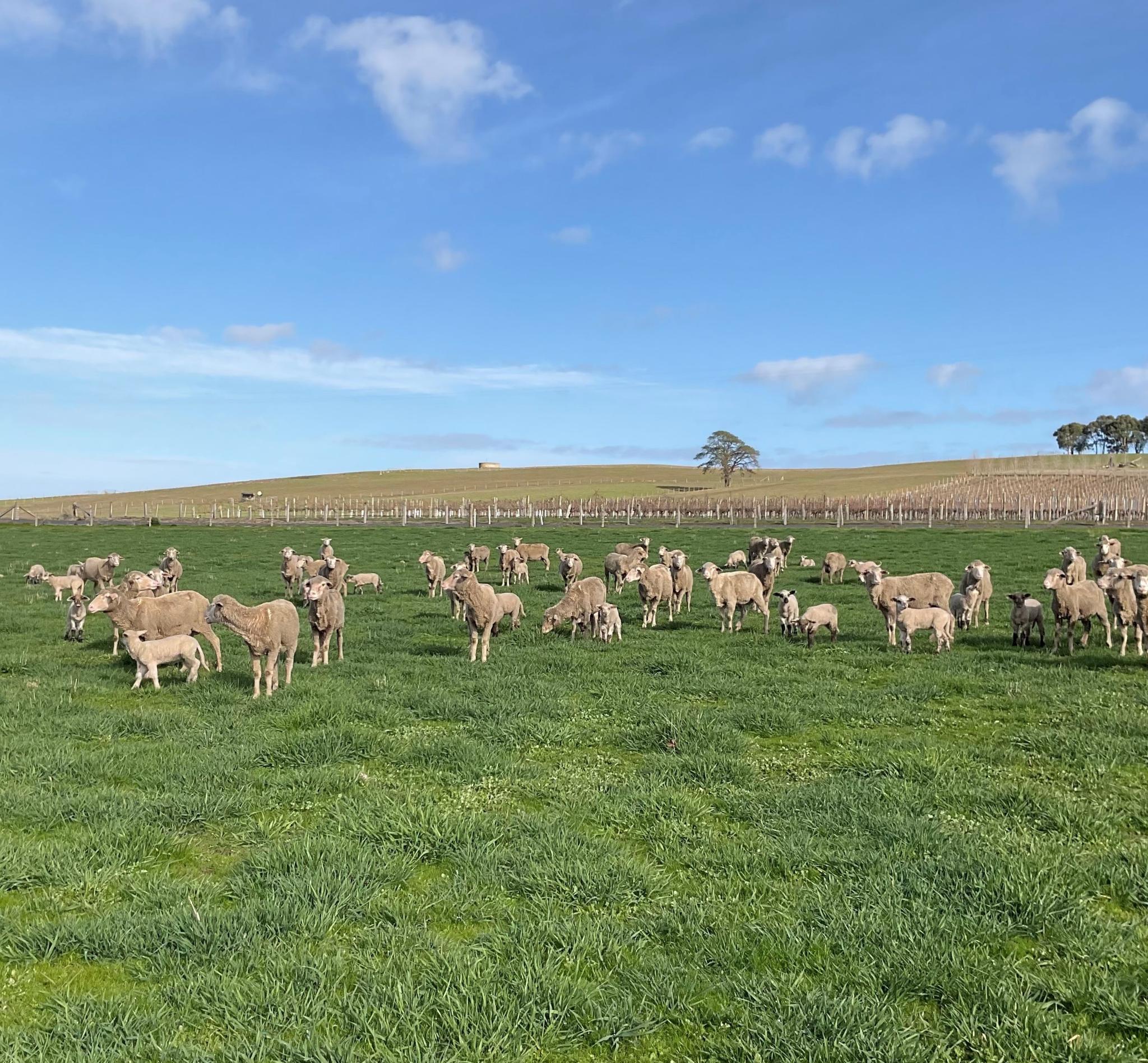Weight gain the profit driver for Suffolk producer

Kenton Valley farmer Jacob Herrmann uses Suffolk rams over half of his Poll Merino ewes. Photos: Supplied
The recipe for producing top quality prime lambs boils down to terminal sire choice and lot feeding, according to Kenton Valley farmer Jacob Herrmann.
Mr Herrmann, who farms 970 hectares with his father Phil across properties in the Adelaide Hills and near Karoonda in the Mallee, has a self-replacing flock of about 1400 Poll Merino ewes.
Half are joined to a dozen rams from Superior Wool Merinos, Tintinara, and the other half to eight Suffolk rams from Telpara Suffolks, Sherlock.
Mr Herrmann said they originally used White Suffolk rams for crossbred lambs but the stud they were buying from closed about six years ago.
On the advice of their stock agent, they decided to try Suffolk rams and haven't looked back.
Mr Herrmann said he chose rams based on several Australian Sheep Breeding Values (ASBVs): post weaning weight and weaning weight, along with shear force - a measure of eating quality.
"Since we're a commercial operation, the biggest profit driver for us is putting on weight," he said.
"I always aim for rams with high weaning weights. I also look at the weaning eye muscle depth, so they can grow out nice and big."
Risk management is important to the Herrmanns, who also operate an earthmoving business which provides off-farm income.
They employ split joining for autumn and spring lambing.
"We lamb for six months of the year, and it spreads your risk so you've got more chance of having feed available or avoiding weather events, and then also you get to use your rams two or three times," Mr Herrmann said.

Merino ewes and their June-July drop Suffolk cross lambs at Charleston, SA.
There are 700 ewes, plus replacement Merino hoggets, in the Adelaide Hills and the same number at Karoonda.
Splitting the flock across two geographic areas gives them access to more land at a more affordable price as well as a balance of climatic conditions.
The Adelaide Hills is considered high rainfall country, averaging about 800mm of rain a year, and pastures are made up of rye grass, clovers, phalaris and cocksfoot.
Karoonda is in a low rainfall zone, averaging about 350mm of rain a year, where sheep graze on mostly native grasses and the occasional crop of forage barley.
Karoonda is also home to a feedlot where up to 900 lambs at a time receive a grain ration of barley and lupins mixed with a custom buffer powder to prevent acidosis and bloating.
Any lambs - including Merino wether lambs - born on other properties that are suitable for lot feeding are trucked to Karoonda.
Ideally, four-month-old lambs enter the feedlot at about 30kg and are ready for sale about 12 weeks later at 52-62kg liveweight.
Most are sold over the hooks to JBS Australia, Bordertown, with about 100 a year bought directly by Woodside Butcher.
"The butcher we sell to likes his lambs bigger," Mr Herrmann said. "So we grow them out to a 32kg carcase, and then you get a loin chop with a large piece of meat in it; good, even fat cover, and because they've been on grain, the fat is a nice white. And then, because we've got rams that are picked for eating quality, you get a nice tender meat as well."
Pastures have suffered from drought and a harsh summer, but June rain has encouraged growth in areas that were resown.
"We're going to need a kind spring, a wet spring, just to grow some feed," Mr Herrmann said.
"The past two years we haven't had a decent hay cut. So we're really, really hoping to grow some hay this year. And I know the cropping guys are really desperate for some good rains in spring too, to grow some grain, because ... you can't buy a bale of hay in South Australia at the moment."
Fortunately for the Herrmanns, high lamb prices have helped offset the cost of extra grain for the ewes which are receiving supplementary feed through a combination of feeders and trails.
"The last lot of mixed breed lamb went for $10.60 a kilo," Mr Herrmann said.
"It's the best money I've received in 10 years for lamb, and that really has saved us and made it so we can continue to feed. We have backed off a little bit, but we are still feeding now, and I expect to feed for at least the next month."
This article appeared in the Stock Journal 2025 LIvestock Annual
